OBS
Using OBS to publish to Dolby.io Real-time Streaming
Open Broadcaster Software (OBS) is a free open-source software created for broadcasting and recording on your desktop. You can take advantage of this tool to stream high-quality video to your viewers in real time using the Dolby.io Real-time Streaming service.
See the official obsproject.com documentation for installation instructions and additional support about using OBS.
Setting Up a Broadcast
With OBS, you can broadcast using RTMP, SRT, or WHIP.
RTMP
Setting up an RTMP broadcast with OBS is a common workflow. You can use the Dolby Millicast Service provider to configure your broadcast.
It should be noted that broadcasting with RTMP may add some additional latency between the broadcast location and the origin server.
Dolby Millicast Service
The Dolby Millicast Service was added as a Stream option in more recent releases (after 30.x) of OBS.
1. Choose Dolby Millicast as the Stream Service
Open profile Settings and select the Stream section. From the Service dropdown you should see Dolby Millicast among the options.

OBS 30.x Dolby Millicast Service
2. Pick Your Server and Enter Your Stream Key
From the Server dropdown menu, you can select Global to have your broadcast location automatically determined or choose from any of our cluster regions.
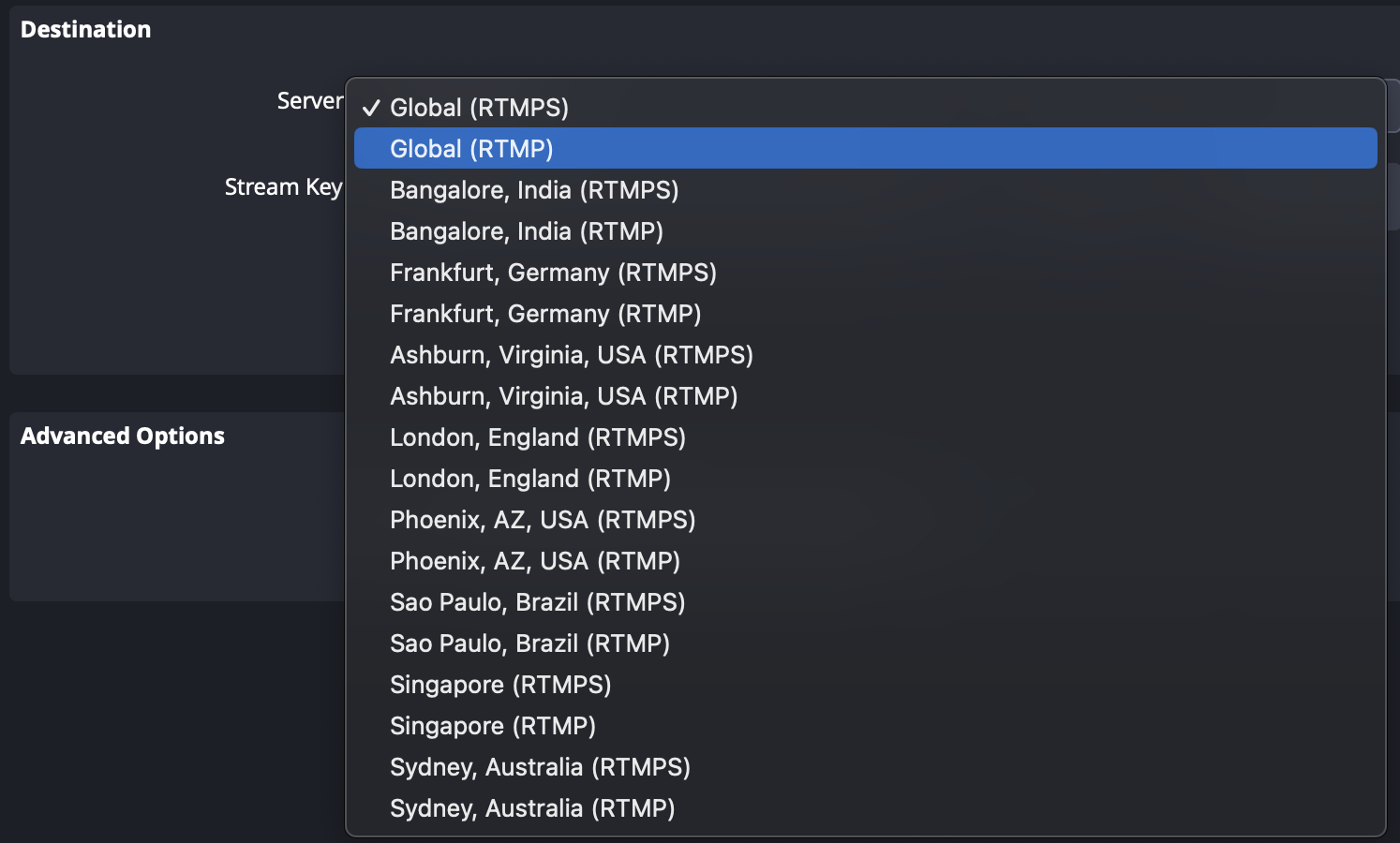
Server Locations
You'll need to copy your RTMP publish stream name from the Streaming Dashboard and enter it as the Stream Key. For RTMP, this value would be the name of your stream with the publishing token as a query parameter and can be found on the Publishing tab.
3. Start Streaming
You'll be able to start broadcasting by clicking the Start Streaming button. You can verify this by using the Hosted Player in the dashboard.
WHIP
The introduction of WHIP support in OBS 30.0 has made it easier to configure a WebRTC broadcast with OBS. For workflows that must use prior versions, we've also provided a WebRTC fork of OBS to use.
OBS 30.x Setup
1. Choose WHIP
Open profile Settings and select the Stream section. From the Service dropdown you should see WHIP among the options.

OBS 30.x WHIP Service Configuration
2. Copy WHIP Settings
From the Streaming Dashboard you can select the Publishing tab to find the WHIP settings you'll need to configure your broadcast.
| OBS Setting | Streaming Dashboard |
|---|---|
| Server | This is your WHIP endpoint. |
| Bearer Token | This should be set to the WHIP Bearer token. |
3. Start Streaming
You'll be able to start broadcasting by clicking the Start Streaming button. You can verify this by using the Hosted Player in the dashboard.
OBS WebRTC Fork
Prior to OBS 30.0 it was necessary to use a custom fork. For certain workflows this may be desirable so you can continue to download releases from the project GitHub repository: OBS-studio-webrtc.
You can choose either WebRTC or RTMP from the Stream menu. There are additional configuration options as well for multi-source broadcasting or simulcast.
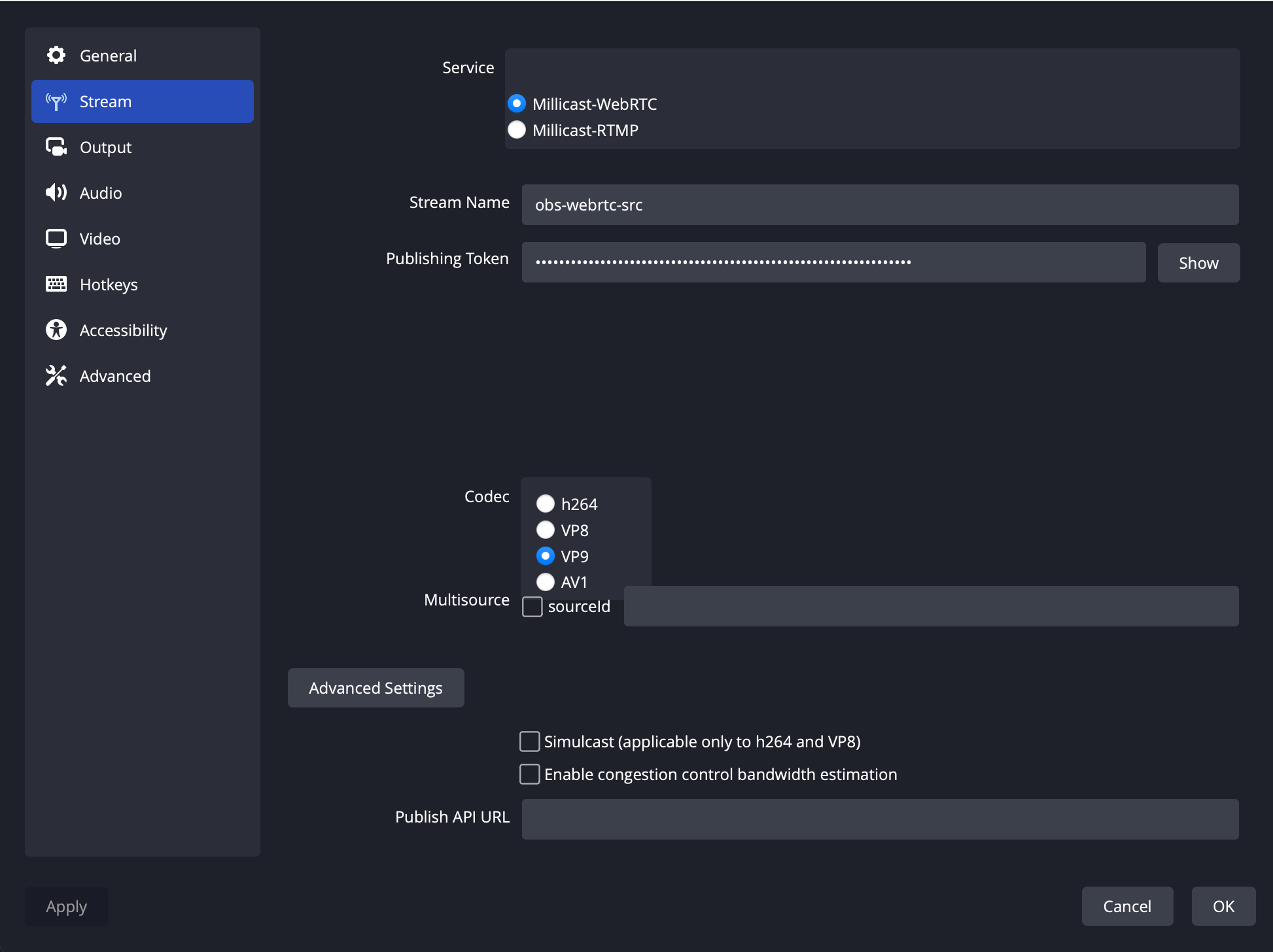
SRT
Beginning with OBS 25.x you can stream with SRT.
Configure Custom Stream Settings
1. Open Settings
Open the Settings panel to configure your broadcast.

Open Profile Settings
Select Custom for the Service.
2. Enter Publish Token Settings
You'll need to gather a few details from the Streaming Dashboard for your publish token.

Custom Service Configuration
| OBS Setting | Streaming Dashboard |
|---|---|
| Server | This is the SRT publish path for your publish token. |
| Stream Key | This is the SRT stream ID for your publish token. |
3. Start Streaming
You'll be able to start broadcasting by clicking the Start Streaming button. You can verify this by using the Hosted Player in the dashboard.
Multi-bitrate Simulcast Contribution
Simulcast is a mechanism for distributing streaming content with renditions that are optimized for viewers who may be under constrained network or device conditions. With Dolby Millicast, you can contribute multiple sources that contribute layers that are passed through for playback.
Configuring MBR with Multi-Source RTMP
You will need adequate bandwidth to stream to multiple destinations from the broadcast location.
1. Install obs-multi-rtmp Plugin
To begin, install the obs-multi-rtmp plugin. This is a plugin for streaming to multiple RTMP servers concurrently.
The plugin can also be used with standalone encoders and basic configurations (bitrate). See the troubleshooting section if you run into trouble installing the plugin.
2. Configure Publish Token
Enable multisource on your publish token
Make sure you have enabled multi-source on your publish token. For more information explore the Multi-source guide. The Multi-source Builder may also be particularly helpful to get your settings.
3. Add RTMP Destinations
You'll use the multiple output dock or panel to enter the RTMP connection details. You'll be using Publishing Parameters to uniquely identify each layer.
The format will follow the pattern:
{StreamName}?token={Token}&sourceId={number of source}&simulcastId
The sourceId should be a number (1, 2, or 3) with simulcastId enabled (boolean).
Here is example using 3 bitrates (1080p, 720p, 360p) as inputs using the obs-multi-rtmp plugin:
| RTMP 1 | |
|---|---|
| Name | 1080p |
| RTMP Server | rtmp://live-rtmp-pub.millicast.com:1935/v2/pub/ |
| RTMP Key | {StreamName}?token={Token}&sourceId=1&simulcastId |
| Encoder | x264 or nvenc |
| Resolution | 1920x1080 |
| Bitrate | 6000kbps |
| Keyframe | 2 |
| BFrames | 0 |
| RTMP 2 | |
|---|---|
| Name | 720p |
| RTMP Server | rtmp://live-rtmp-pub.millicast.com:1935/v2/pub/ |
| RTMP Key | {StreamName}?token={Token}&sourceId=2&simulcastId&videoOnly |
| Encoder | x264 or nvenc |
| Resolution | 1280x720 |
| Bitrate | 2000kbps |
| Keyframe | 2 |
| BFrames | 0 |
| RTMP 2 | |
|---|---|
| Name | 360p |
| RTMP Server | rtmp://live-rtmp-pub.millicast.com:1935/v2/pub/ |
| RTMP Key | {StreamName}?token={Token}&sourceId=3&simulcastId&videoOnly |
| Encoder | x264 or nvenc |
| Resolution | 640x360 |
| Bitrate | 500kbps |
| Keyframe | 2 |
| BFrames | 0 |
4. Start Streaming
Click the start button for each target.
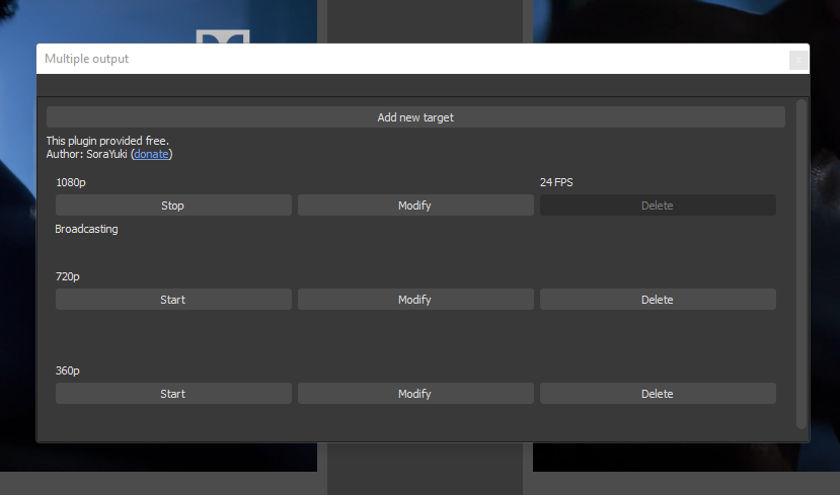
You may need to click start streaming in OBS to update the current configuration, then click stop streaming and return to the multiple output panel. When you click start streaming again, the config will be updated, and the RTMP MBR renditions will stream to Dolby.io Real-time Streaming CDN.
5. Playback
You can verify that simulcast is working by using the Hosted Player in the dashboard. Selecting the gear / settings menu will show each video quality allowing you to manually switch to a lower quality layer.

Simulcast Broadcast Example
Configuring MBR with Single-Source WHIP
You'll need to use the OBS-studio-webrtc fork because advanced simulcast settings are not yet available in OBS 30.x with WHIP support.
Add your stream name and token from your Dolby.io Real-time Streaming token into OBS's settings. Select either H.264 or VP8 for the codec as Simulcast only works for those two codecs. Click on the advanced settings button and check the Simulcast box to enable the feature inside OBS. Finally, apply the changes.

Next, we are going to set the output settings in OBS to see the different video qualities. Under stream, click on output and set the output mode to advanced. Set the encoder to NVIDIA NVENC H.264 (if available). Next, change the rate control to CBR (Constant Bitrate), and modify the bitrate to 6000 Kbps.
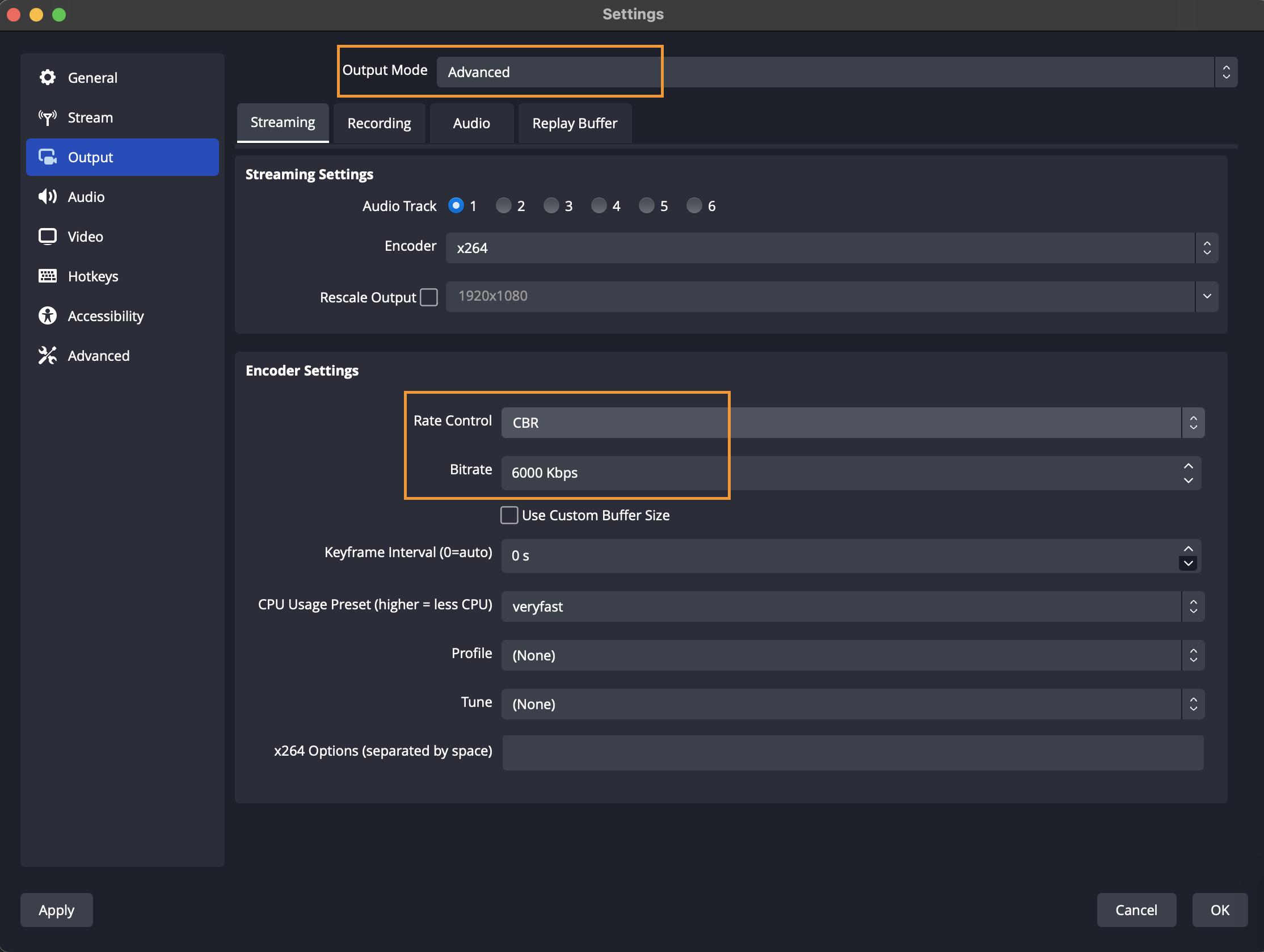
Next, set the Base Resolution and your Output Resolution to be matching. Apply all changes, and you are now ready to start your stream.
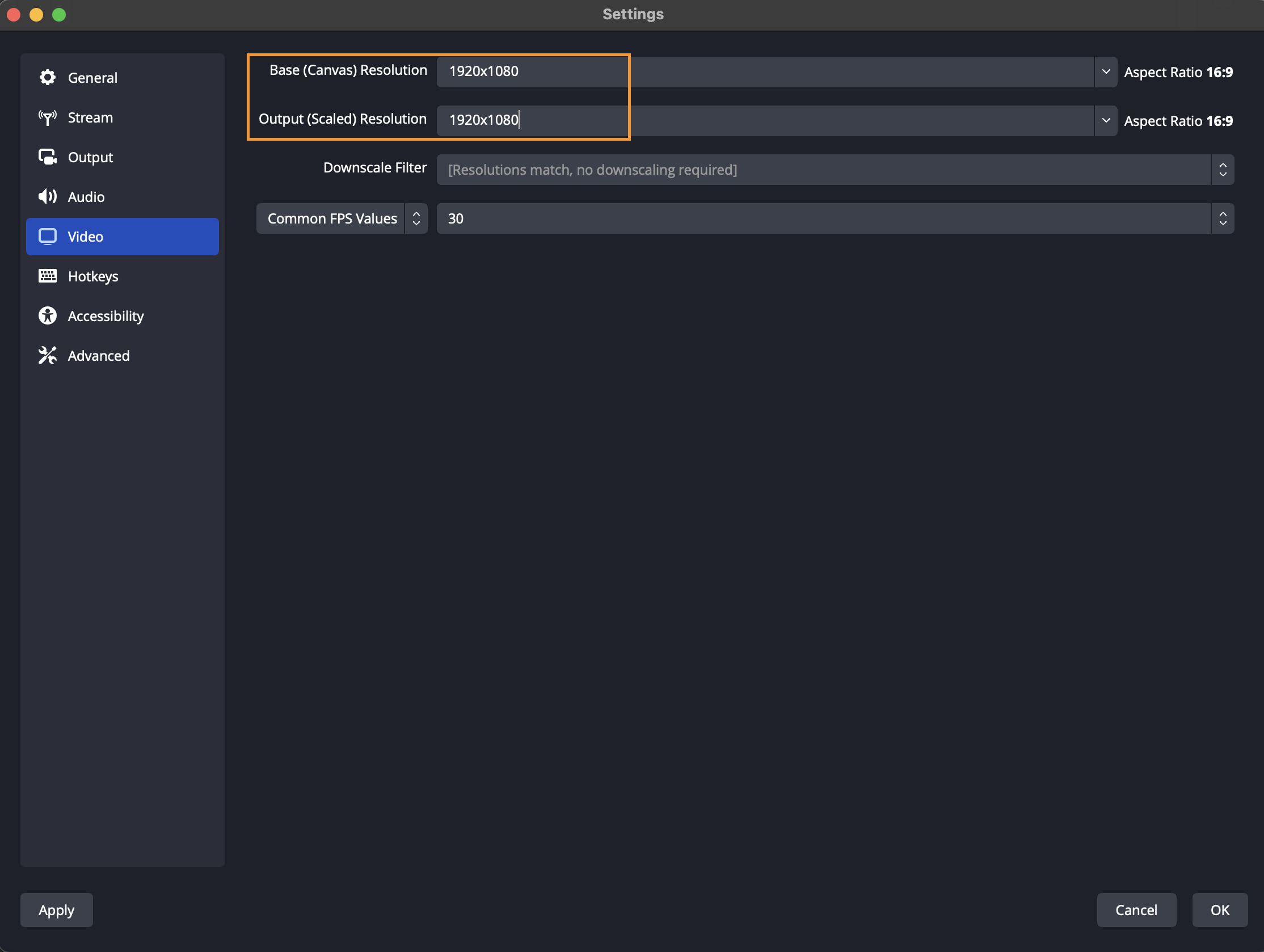
Troubleshooting
B-Frames May Cause Stream Stuttering
You should disable B-Frames.
Review your Encoder Settings from the Output configuration with Advanced Output Mode.
Surround Sound Audio
Dolby Millicast supports delivering up to 8 audio channels enabling surround sound. The audio channels can be surround sound channels or more general multichannel ones. The Hosted Player will support the playback of surround sound.
1. Setup Your DAW
Digital Audio Workstations (DAW) are used to manage media tracks as inputs for OBS studio. You need to download and install one and assign it as an input source for the audio on OBS. Some common ones include:
| Windows | MacOS |
|---|---|
| SAR (requires an ASIO driver) | Soundflower |
| Voicemeeter | Jack server |
| Virtual Audio Cable (requires v.4.50 or later) | Loopback |
Reroute (from Reaper, with up to 256 channels) if using the ASIO plugin

Audio Device Properties Example
Ambisonics
If you have an Ambisonic it is also possible to publish spatial audio using the same setup. Here for the demo a Zoom H3-VR can be used. Set for Dolby.io OBS WebRTC is the same as 5.1 and with Zoom mic you will see for channels to capture and stream to your surround sound set up.
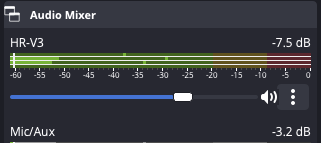
Properly set up for 4-channel ambisonics. This can be paired with a 360 camera.
2. Configure OBS
To get started make sure you have OBS installed on your device. Once installed head to settings then audio. Select a channel different from mono or stereo in the channels list in general.
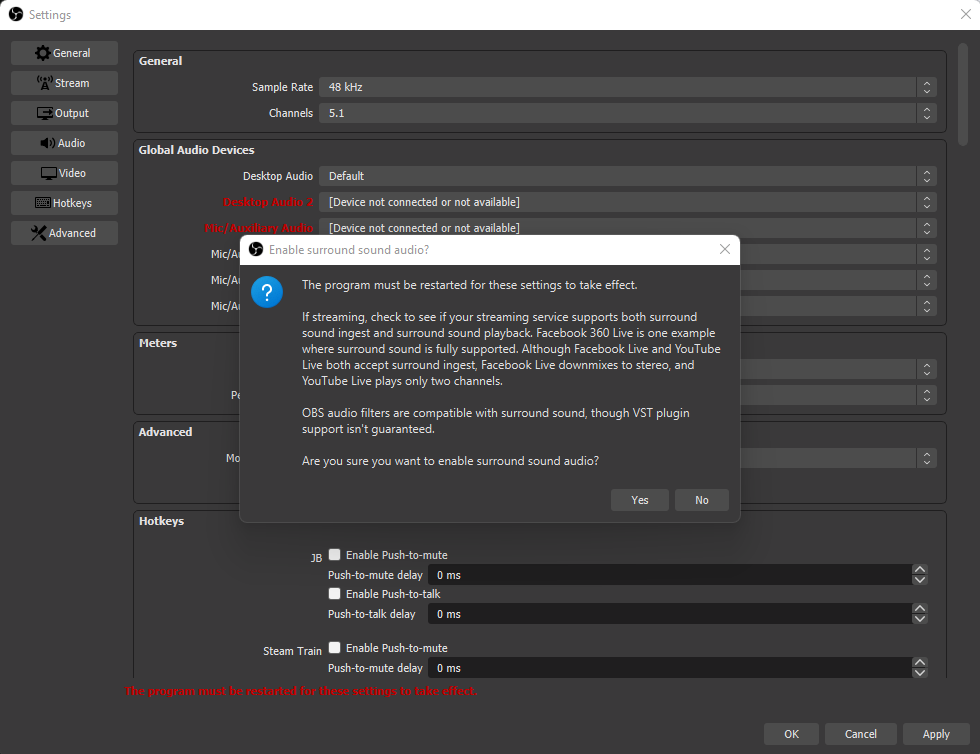
Click OK on the warning pop-up and restart OBS.
3. Set Audio Bitrates
Next switch to output and select advanced for output mode. Select the audio tab and pick a large bitrate. By default, OBS-Studio selects 160 kbps for stereo. This is insufficient for surround sound. As a rule of thumb, 64 kbps multiplied by the number of channels should be an appropriate amount of bandwidth.
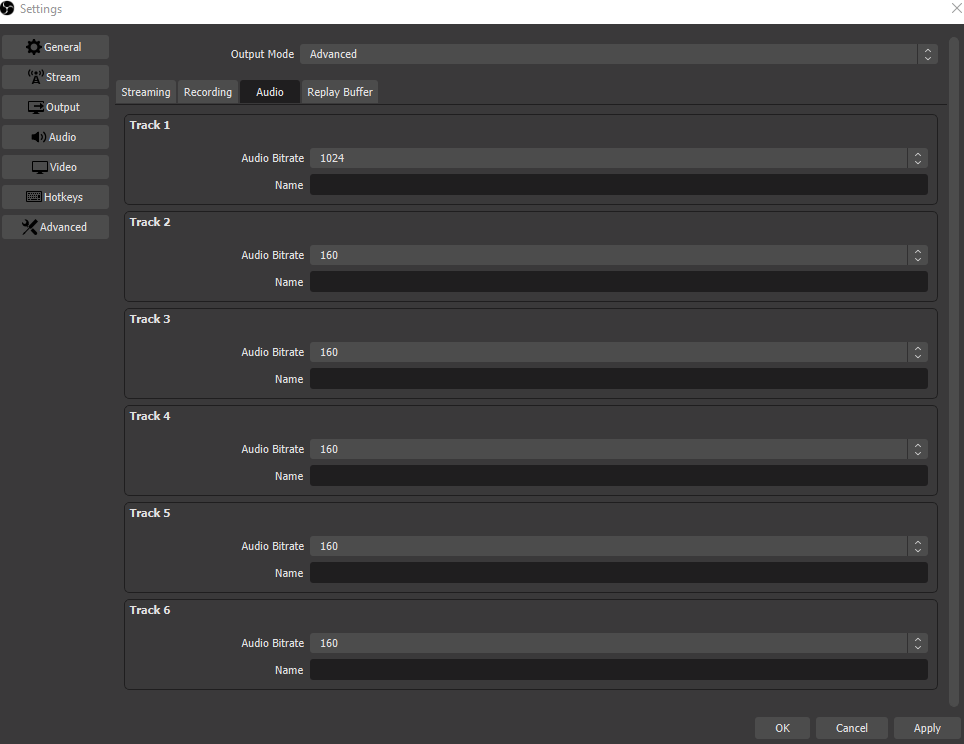
4. Start Streaming and Playback
When you begin streaming with surround sound you'll need an appropriate player to verify the experience.
Windows
Set up requires proper sound settings enabled on your speakers. The setup shown is on a Vizio 5.1.2 Atmos sound bar.
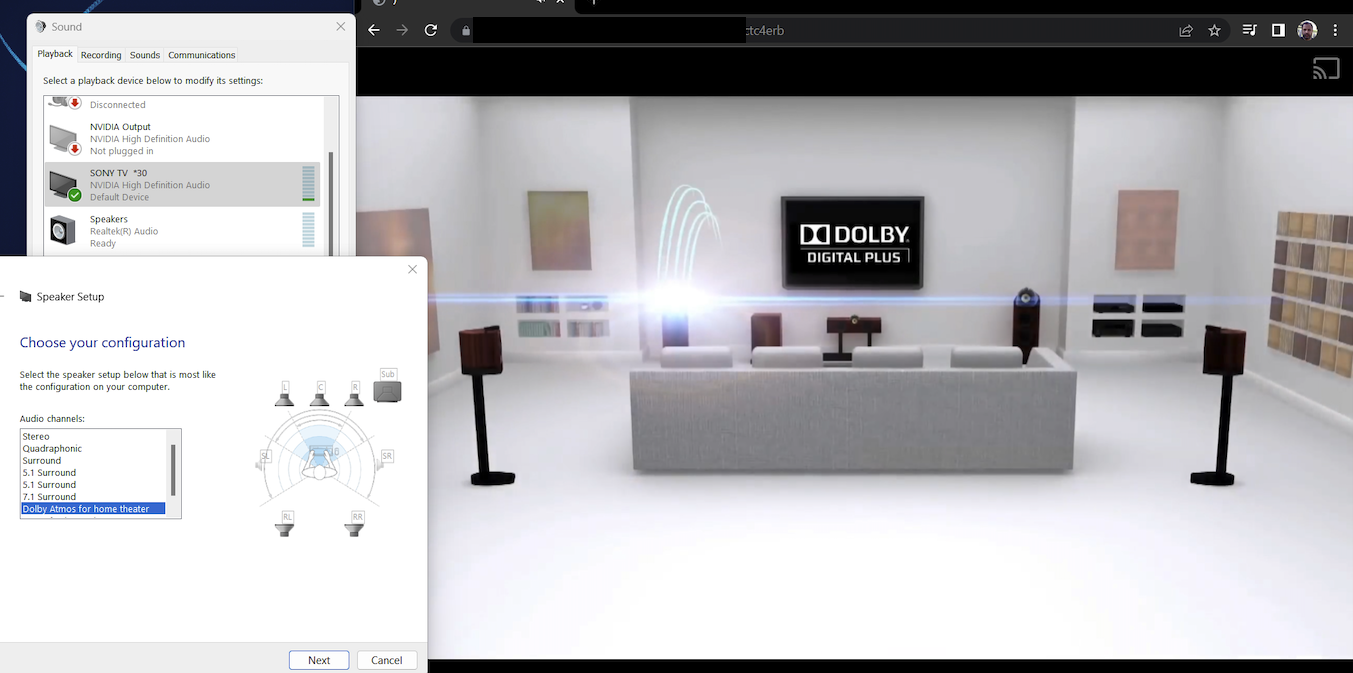
On your Windows make sure you are using Chrome browser for your viewer.
Mac
Surround sound playback should be enabled by default on your Mac. You can listen to the stream in-browser or via the Dolby.io Stream Monitor app can be installed for free on your iPad or AppleTV.
Installing OBS-Multi-RTMP Plugin
Additional instructions for installing the obs-multi-rtmp plugin.
Windows
For Windows broadcasting:
- Download the latest release from OBS-Multi-RTMP.
- Unzip the zip file and extract it into the OBS folder.
OBS StudioC:\\Program Files\\obs studio
OBS WebRTC default location.C:\\Program Files\\OBS WebRTC (64bit)\\obs-plugins

You should see the following obs-multi-rtmp.dll in your plugins folder.

Once you have the obs-multi-rtmp.dll in your C:\\Program Files\\OBS WebRTC (64bit)\\obs-plugins folder, you can start OBS.
When you open OBS-WebRTC now, you will see the ability to add multiple RTMP targets.

Mac
Additional instructions for installing the obs-multi-rtmp plugin.
Match OBS Plugin Versions
For macOS, an alternate plugin can be found at kilinbox/obs-multi-rtmp. The plugin's version needs to match the OBS-WebRTC's version.
For this setup, download the ZIP file and unpack it. Copy the obs-multi-rtmp.plugin.
- Next, go to Applications, right-click on OBS-WebRTC, and select show package content.
- Inside go to
Contents > PlugInsand paste within the folder's content. - Open OBS-WebRTC, and on the top menu bar, under docks, multiple output will be checked off.
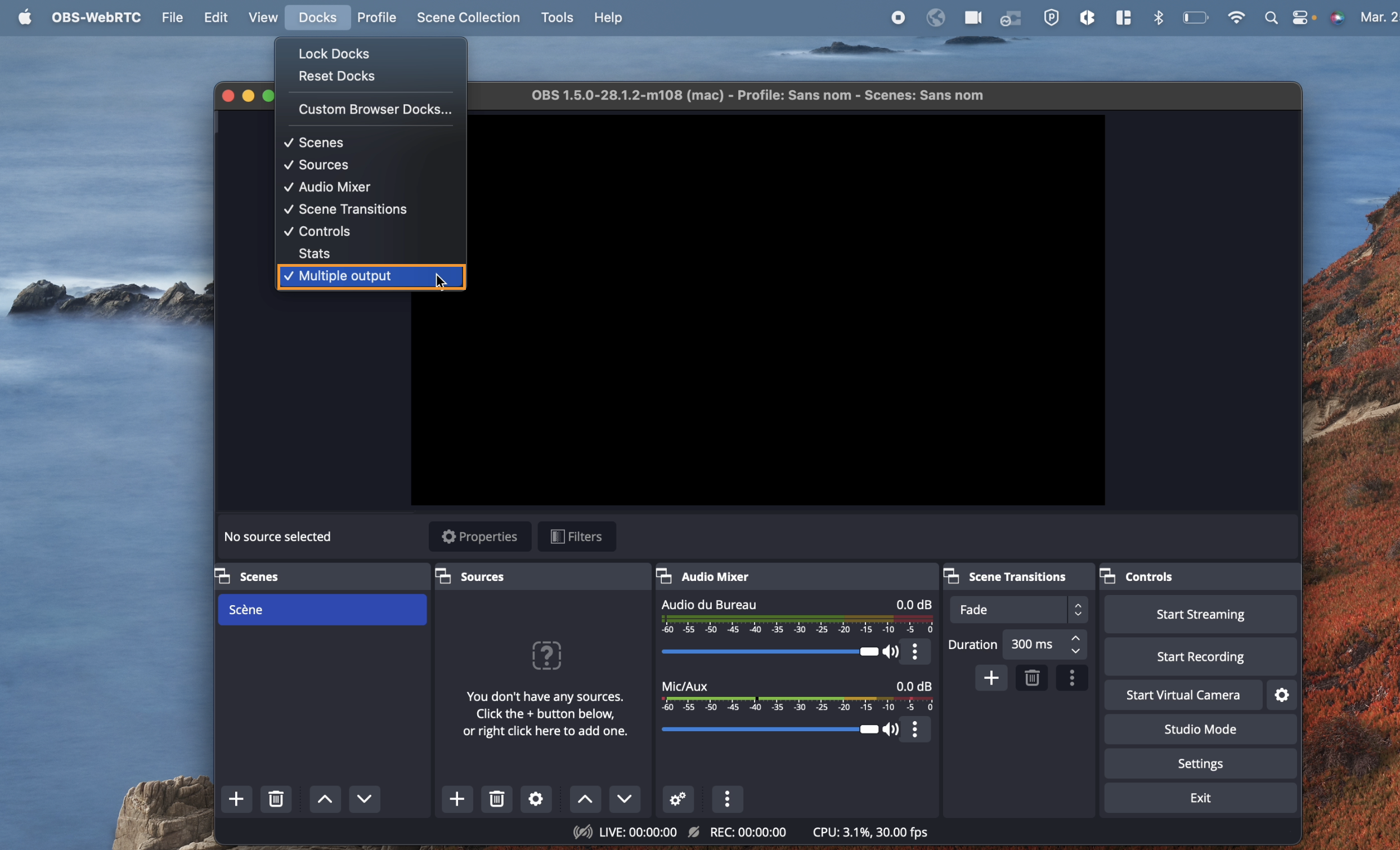
Next, go to the multiple output dock. If it is not showing up on your OBS, visit the dock menu at the top and reset it. Enable the multiple output option. Click on Add new target to create an RTMP destination.

Learn More
A Deep Dive Into WHIP, WebRTC, RTMP & SRT
This video guide walks through setup and capabilities of an OBS workflow.
Updated 4 months ago